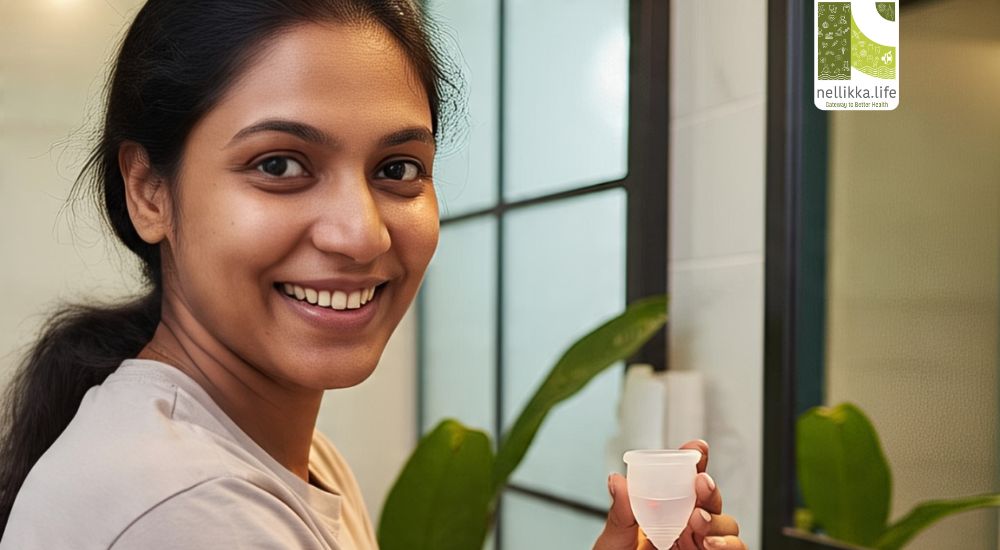Why More Women Are Switching to Menstrual Cups: Science-Backed Benefits You Need to Know

The conversation around menstrual health is evolving — and rightly so. Among the many innovations that have empowered menstruating individuals, the menstrual cup has emerged as a game-changer. But beyond convenience and cost-effectiveness, there’s solid science backing why more women are making the switch.
In this blog, we break down everything you need to know about menstrual cups, their health impact, environmental significance, and scientific studies supporting their use.
What is a Menstrual Cup?
A menstrual cup is a small, flexible cup made typically from medical-grade silicone, rubber, latex, or elastomer. Inserted into the vagina during menstruation, it collects menstrual blood rather than absorbing it, unlike pads or tampons.

These cups are reusable, lasting anywhere from 5 to 10 years with proper care, making them an eco-friendly and cost-efficient option.
Scientific Importance of Using Menstrual Cups
1. Health and Hygiene Benefits
Lower Risk of Toxic Shock Syndrome (TSS):
A study published in The Lancet Public Health (2019) concluded that menstrual cups are as safe as other sanitary products, with no increased risk of TSS when used properly.
Preservation of Vaginal Flora:
Unlike tampons, which can disrupt the natural pH and flora of the vagina, menstrual cups are less likely to cause irritation or imbalance.
Reduced Allergic Reactions:
Medical-grade silicone is hypoallergenic, making menstrual cups suitable for people with sensitivities to materials found in pads or tampons.
Environmental Impact
Each menstruating person uses an estimated 11,000 to 16,000 disposable pads or tampons in a lifetime. Menstrual cups significantly reduce plastic waste, making them a sustainable choice.
According to a report by UN Women, menstrual waste contributes heavily to global pollution. Switching to reusable products like menstrual cups can dramatically reduce this environmental footprint.
Economic Advantages
Though the upfront cost of a menstrual cup may be higher (₹500 to ₹1500), the long-term savings are substantial. A cup lasts for years, eliminating the monthly expense of pads or tampons.
Are Menstrual Cups Safe? What Science Says
- A comprehensive review by the Cochrane Database (2019) examined multiple studies and found menstrual cups to be safe and effective, with leakage rates comparable to or better than other products.
- Additional research suggests menstrual cups do not increase infection risks when cleaned and maintained correctly.
Myths vs Facts
Myth: Menstrual cups are painful to insert.
Fact: With practice and proper technique, most users report ease of use and increased comfort over time.
Myth: You cannot use menstrual cups if you’re a virgin.
Fact: Virgins can use menstrual cups, though they may prefer smaller sizes for comfort.
Tips for First-Time Users
Start with a soft, small-sized cup.
Practice insertion when you are relaxed.
Always sterilize the cup before and after your cycle.
Empty and rinse the cup every 6 to 12 hours, depending on flow.
Why Menstrual Cups Deserve More Attention
Menstrual cups empower women and menstruating individuals by promoting health, sustainability, and economic savings. Backed by science and real-world use, they represent a progressive step toward menstrual dignity.
As with any health product, proper education, correct usage, and hygiene practices are essential. But once mastered, menstrual cups can transform menstrual health experiences for millions.
References :
1. Menstrual cup use, leakage, acceptability, safety, and availability: a systematic review and meta-analysis
2,Preclinical, clinical, and over-the-counter postmarketing experience with a new vaginal cup: menstrual collection




